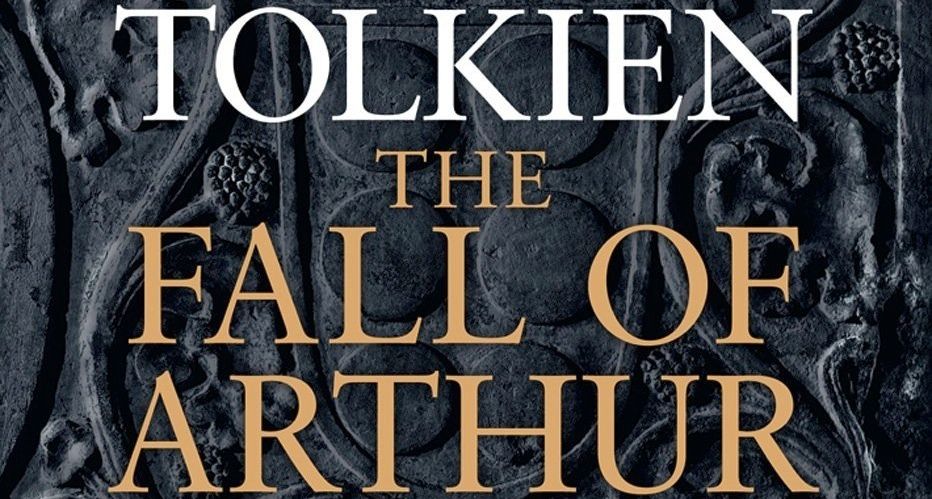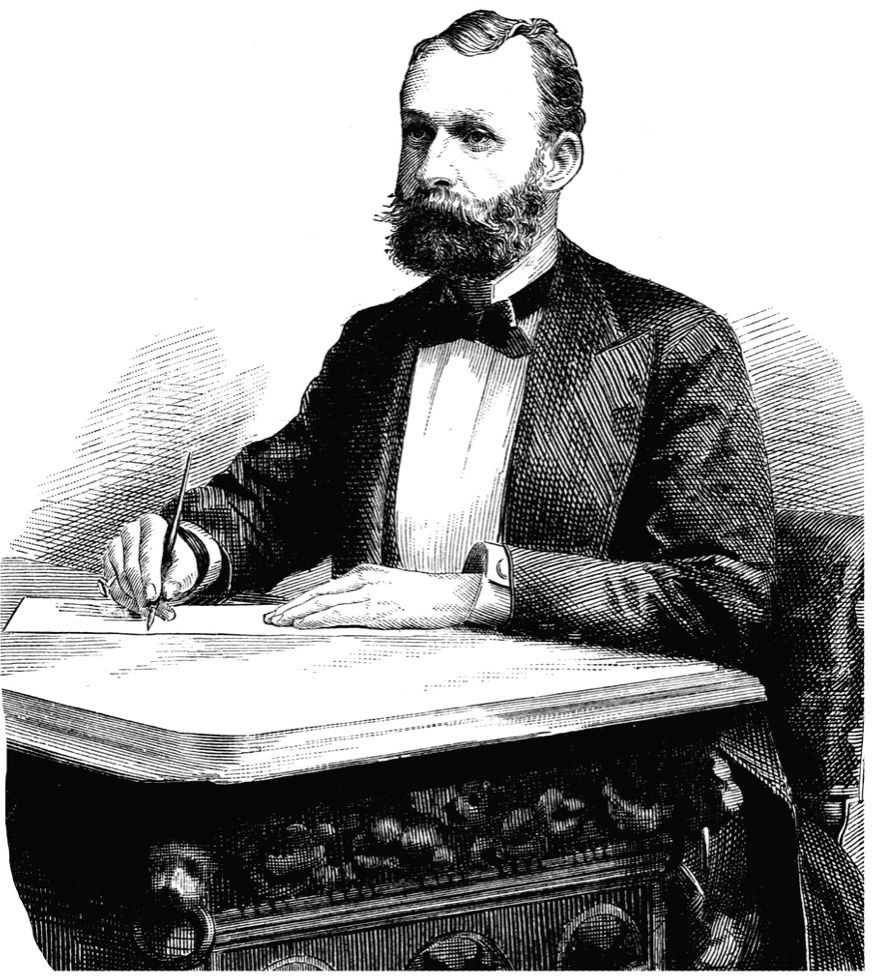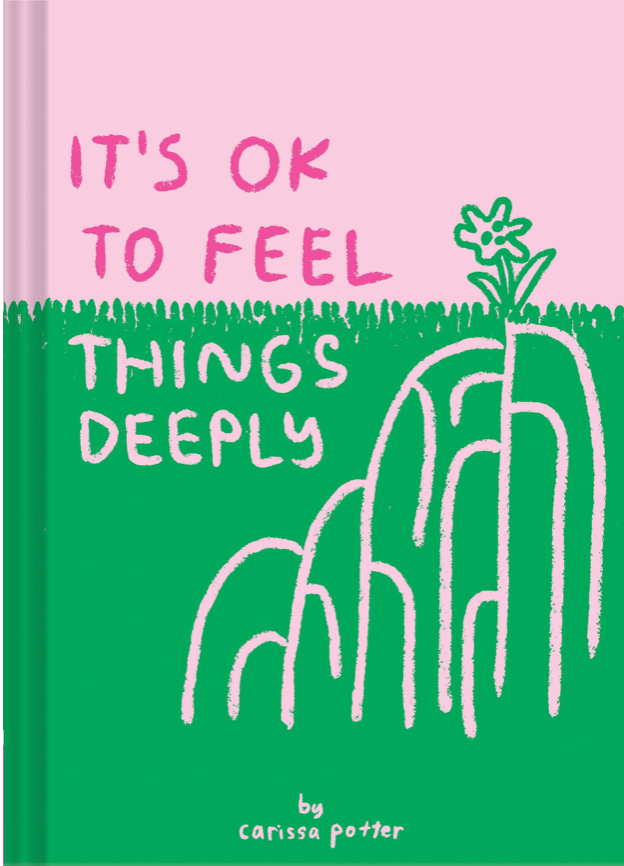This article should be illegal.
In That Hideous Strength by C.S. Lewis, a sociologist agrees to write newspaper articles on a riot that has not yet happened, but which his bosses have engineered to occur next day. Mark’s job is interpretation of the future: placing his criminal bosses in the best light so they will benefit from the very chaos they have manufactured.
What I propose to do here is not quite so nefarious. I propose to review a book that has not yet been released and which I have not yet read. The book is The Fall of Arthur by J.R.R. Tolkien, scheduled for release from Houghton Mifflin Harcourt on May 23rd, 2013. You can pre-order it on Amazon.
But before I launch into my highly questionable pre-review (preview?), let me justify this course of action by means of a little bit of literary history and a little bit of literary analysis—fancy shenanigans of the English-teacher type. (By the way, I am not the only thought criminal in this regard; read this excellent pre-review, for instance).
The story of King Arthur is among the most adapted stories of all time. A quick list at the democratizing modern research archive, Wikipedia, reveals 92 films based on Arthurian legend and 392 books about King Arthur. These lists are incomplete and do not include works that reference the Arthurian story obliquely or draw on its imagery and symbolism.
These Arthurian works change the story wildly over the ages. Characters are added or deleted. (Lancelot didn’t appear until some 700 years into the tradition.) Villains evolve into heroes and vice versa. (Morgan le Fay is notorious for changing sides.) Events are invented or erased; the Quest for the Holy Grail, for instance, was a twelfth-century addition. Happy endings become tragedies or the other way round. (In some, Arthur dies at the end; in others, he is taken to Avalon for healing and eternal life.) The time period shifts: You’ll find stories set anywhere from the 400s to last Tuesday. The geographical locations move all over the British Isles and even into fairyland. In short, the whole story is tailored to suit the times.
Each new storyteller uses Arthur & Co. as a vehicle for political, religious, economic or other messages. They might use it to condemn non-Christians or promote syncretism. They might alter it to bolster patriotism or argue against nationalism. They might shape it in support of the monarchy or to undermine the government. They might fashion it as a hymn of praise for virginity or a shout of radical feminism.
But that can’t be right, can it? I mean, think how angry we get when we go to see a movie that is an awful adaptation of a beloved book. How could all these authors and movie-makers take the “real” King Arthur story and mutilate it so it is unrecognizable when compared to the original?
The answer to that question is astonishing and liberating:
There is no original.
This is why the King Arthur legends are perennially popular: There is no urtext. Oral traditions predate written works. Indeed, the legend has two divergent parents: the Welsh tales, in which dark magical forces such as Merlin are operative; and the French Romance tradition, which added knights, chivalry, Lancelot and the Grail.
Since there is no “right” story that we can point to as “the book” on which the movie, painting or other book is based, none of the adaptations can be “wrong.”
Furthermore, the whole idea of adaptation needs constant renewal. Of course, we know that we should not judge adaptations by their supposed fidelity to the source text—and there is no source text in this case anyway—but there is more. Each adaptation, no matter what it alters, should be evaluated on its own aesthetic terms. There has been a lot of intelligent talk about this in the past years, especially as some great literary works have been making their way onto the screen in new ways for new times.
And there’s at least one more reason that Arthurian adaptations proliferate without restraint. The story—whichever stories you choose as prior—is enormous, many-limbed and lithe with variety. It is packed with enough characters, events, images and emblems to fit anybody’s preference. There is always someone in it who is you.
For all these reasons, then, King Arthur and his entourage map onto each generation—and for all these reasons, we can predict a lot about the forthcoming Tolkien book before we read it. So this is not so much a pre-review as a prophecy. Of course, there is also plenty of chatter in the news, on Tolkien sites, on fan sites, in the blogosphere and elsewhere online where the savvy Googler can pick up tips.
Here, then, are some semi-oracular statements:
The Fall of Arthur will be a thoroughly twentieth-century work, tinged with Tolkien’s particular kind of re-imagined Medievalism and Northerness. This is obvious, both because of the flexibility of the story itself and because of Tolkien’s literary taste and style. But more specifically: I predict that there will be echoes of the First World War in the battle scenes and the general kappa element (tone, feeling or atmosphere) relating to military action. War is an ugly beast in Tolkien’s works. This is not lessened by the glory he gives to warriors. I think, then, that there will be a feeling of hopelessness in the Battle of Camlann, counteracted by the individual heroism of ordinary people. The little knight whose name has been forgotten will do deeds to rival those of Gawain, Lancelot and Arthur himself.
If The Fall of Arthur contains a description of what T.S. Eliot called “The Wasteland,” the land around the Castle of the Hallows that was made desolate by the Dolorous Stroke, I predict that it will be seen through Tolkien’s radical environmental vision. Malcolm Guite has explained how the Inklings were not backwards-looking dinosaurs, but forward-thinking prophets in their own time. One of Tolkien’s most enduring themes is his love of the environment, his stewardship of the land and his bleak vision of what happens when we loot and scar the earth with industry. In The Lord of the Rings, this is seen most clearly in Saruman’s depredations of the forest of Fangorn. In The Fall of Arthur, there is a chance for it to be shown in the lands around Carbonek, or at least as a context for war.
In contrast to Tolkien’s modern vision of earth care, there will be quite backwards, “Victorian” depictions of stylized women, if women appear at all. While Tolkien’s women can be powerful and active, he nearly always idealizes them out of reality onto a plane of semi-divinity. It could be argued that such a depiction is “timeless,” rather than “old-fashioned,” and that it is informed by his theological system of thought, but it certainly doesn’t go down well with the modern feminist.
Another old-fashioned idea of Tolkien’s will also be operative in this work. This is his concept of absolutism in language. Unlike Derrida and Foucault, about a generation younger than he, Tolkien believed that words had essential relationships to the things they named. Even more: Words expressed something essential about the things they named. That is why the very words themselves can be evil or good in his Legendarium. While I doubt that he will talk about this in The Fall of Arthur, this concept will have guided his choice of each word.
This leads me quite naturally into a discussion of the poetry of The Fall of Arthur. Is it any good? Well, Ruth Lacon and Alex Lewis believe that “The Fall of Arthur has an excellent chance of being a good poem.” The very brief selections provided suggest that it will be a good poem, with a lively meter, vivid imagery and beautiful sounds. But I doubt that it will be a great poem.
Like his fellow Inklings, who aspired to be great poets, Tolkien’s intellectual understanding and aesthetic appreciation of poetry surpassed his ability to write it. Lewis, Tolkien, Williams and Barfield were decent, reliable craftsmen of verse. Williams was the greatest poet of the quartet. But none of them soared to the heights of some of their contemporaries (Eliot and Auden come to mind) or their models (Milton, Dante, the Beowulf poet). This was partly due to their habit of leaving unfinished works, partly due to their mad multitasking skills and partly due to some undefined quality in their verse that leaves it just a shade below the truly great.
Yet great poetry is not all that matters in a great poem, surprisingly. C. S. Lewis wrote about what else matters. He was describing George MacDonald, but he could have said much the same about Tolkien. He wrote:
“In poetry the words are the body and the “theme” or “content” is the soul. But in myth the imagined events are the body and something inexpressible is the soul…. MacDonald is the greatest genius of this kind whom I know. But I do not know how to classify such genius. To call it literary genius seems unsatisfactory since it can coexist with great inferiority in the art of words—nay, since its connection with words at all turns out to be merely external and, in a sense, accidental…. It was in this mythopoeic art that MacDonald excelled.”
Lewis wrote this in 1946; perhaps a decade later he would have said that Tolkien was the greatest mythopoeic genius he knew. For Tolkien’s genius goes beyond the mere choosing of each word (though he was obsessed with that, and made up his own words and whole languages when English and the dozen or so other languages he knew would not suffice). It moves into world-building.
Why, then, did Tolkien abandon this story? Wasn’t it the ideal vehicle for his holistic, theological vision of a universe of order, meaning, suffering and redemption? Perhaps not. Humphrey Carpenter wrote in his biography: “Arthurian stories were also unsatisfactory to him as myth in that they explicitly contained the Christian religion.” Tolkien wanted to refigure the mythic power of the Christian religion. It wasn’t enough to tell the Gospel; he had to rewrite it in an entirely new universe of his own creation.
A Tolkien scholar named John Garth has written (in this article in The Guardian) that “Any addition to the Arthurian tradition by a major author is welcome; this one is also exciting because of what it adds to our picture of a great modern imagination.” This has always been true. Each addition to the Arthurian tradition adds to our picture of that author’s imagination and to our understanding of the time period in which he or she lives. King Arthur always provides a story for our times, no matter what time it is told and retold. Tolkien’s work, then, will be no exception.




